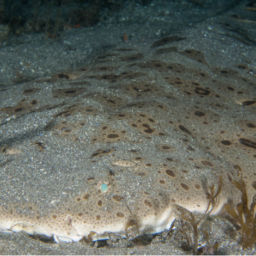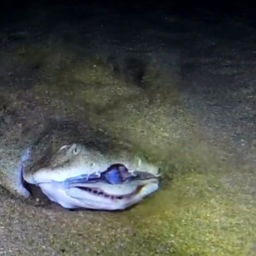The Canary Islands are a unique group of rocky islands in the Atlantic Ocean. Located off the coast of northern Africa, the islands are actually part of Spain and were an important steppingstone for Spanish explorers searching for the new world. Today, tourists flock to the Canary Islands for sun and fun. But surrounded as they are by rocky reefs and home to a wonderful range of marine life, you must venture underwater to find the islands’ most unique asset — the El Cabron Marine Reserve.
European divers have long known about the brilliant diving in the Canary Islands, with countless divers descending on the islands each year to enjoy subtropical diving. There are seven main islands in the Canary Group, and all offer good diving, but we settled on Gran Canaria and the town of Arinaga. This small seaside town is located on the eastern side of the island, not far from the airport, and is the gateway to some of the best diving in the Canary Islands, in the El Cabron Marine Reserve.
There are several dive shops in Arinaga, and it’s easy to do daily dives as all the dive sites are accessible from the shore, with either beach or rock entries and exits.
Diving El Cabron Marine Reserve
From the very first dive we could see why El Cabron had been protected as a marine reserve. For a start, there’s a wide variety of terrain to explore, meaning a wide variety of habitats — rocky reefs, caves, gutters, ledges, walls, seagrass, and sand. And secondly, there is a great variety of marine life on show. It has been estimated that over 400 species live in the marine reserve, with a unique mix of species from the Mediterranean, Atlantic, and even from the Caribbean.
Enjoying 50- to 100-foot (15 to 30 m) visibility and 74 F (23 C) water, we did nine dives in the marine reserve in depths from 30 to 100 feet (10 to 30 m). On every dive there were schools of fish — massive swarms of bream, goatfish, and snapper. We encountered these schools of fish in caves, in gutters and even over the sand at dive sites like Table Top, Two Caves, and Playa del Cabron.
Marine Life in El Cabron
On every dive we also encountered groupers, parrotfish, wrasse, damsels, pufferfish, blennies, flounders, soles, glasseyes, lizardfish, razorfish, scorpionfish, morays, and even garden eels. Our personal fishy favorites were the learned rockfish, a type of seabass that has pretty patterns and a very inquisitive nature.
The marine reserve is also home to an impressive range of invertebrate species, including sea cucumbers, sea hares, sea slugs, nudibranchs, sea stars, fireworms, slipper lobsters, arrow crabs and cleaner shrimp. But we were especially impressed by the cephalopods, seeing common octopus mating, African cuttlefish hunting, and strange, white-spotted octopus at night.
However, the thing that most impressed us — and drew us to the Canary Islands in the first place — was the rays and one special shark species. On every dive we saw rays; on the sand and hiding in the caves. Around 10 ray species live in the marine reserve, including varieties of electric rays, eagle rays, butterfly rays and stingrays. We unfortunately only saw stingrays but encountered three different species.
The El Cabron Marine Reserve is also the best place in the Canary Islands to see common angel sharks. Once widespread in the eastern Atlantic, they are now endangered and only common off of Gran Canaria. We only saw one common angel shark during our stay (we were a little out of season as they prefer the cooler, winter waters), but it was a very special encounter as it was a baby, only 8 inches (20 cm) long.
We had a wonderful time diving the El Cabron Marine Reserve, seeing a host of marine life that was completely new to us and enjoying the relaxed Spanish lifestyle on these unique rocky islands off the coast of Africa.











